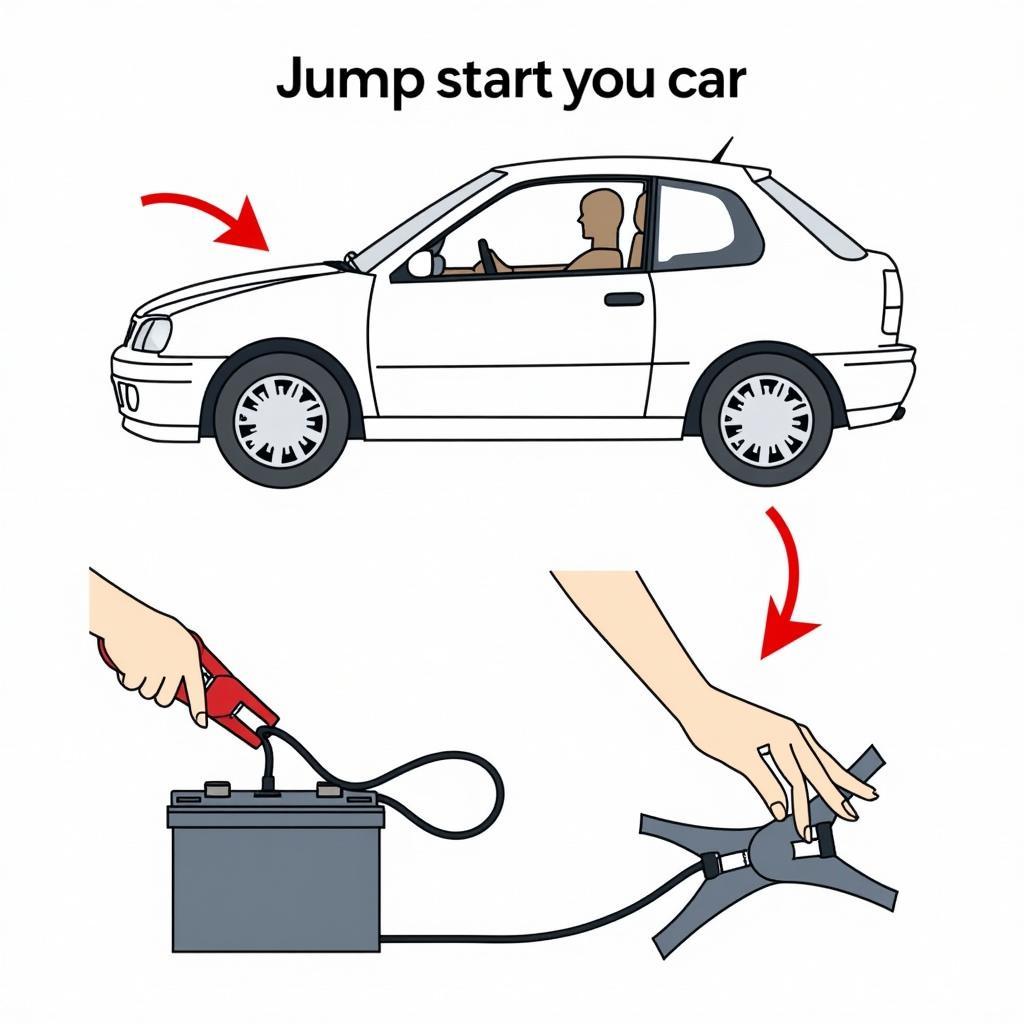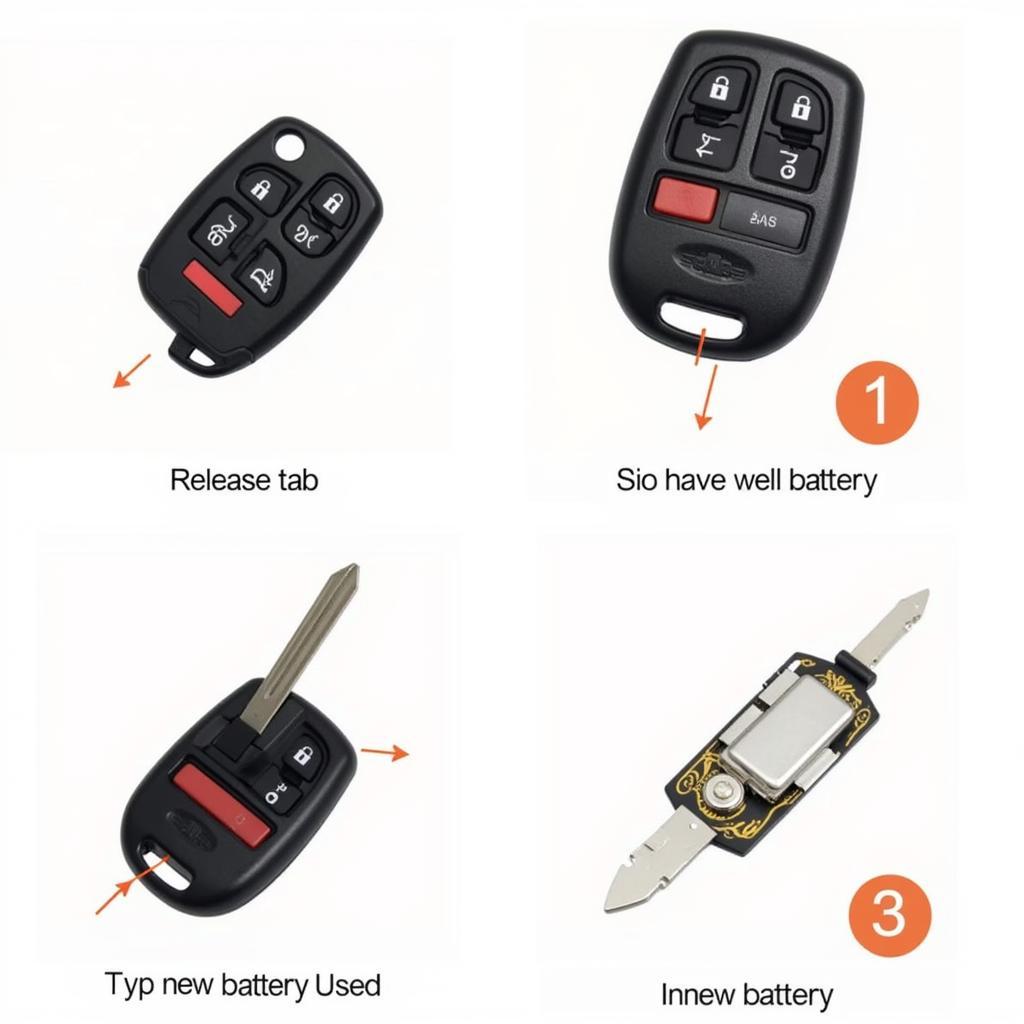“Is my starter bad or my battery?” This is a common question for car owners facing starting problems. Understanding the difference between a bad starter and a dead battery is crucial for effective troubleshooting and repair. This guide will provide a deep dive into diagnosing these issues, offering practical tips, and even exploring remote software solutions for modern vehicles.
 Signs of a Bad Car Starter
Signs of a Bad Car Starter
One of the first things to check when your car won’t start is the battery. Car battery trouble can manifest in various ways. A simple test with a multimeter can reveal whether the battery holds sufficient charge. If the reading is significantly below 12.6 volts, it’s a sign of a weak or dead battery. However, a fully charged battery doesn’t always rule out battery problems. Internal damage can prevent the battery from delivering the necessary current to crank the engine.
Diagnosing a Bad Starter
A failing starter often exhibits telltale signs. One common symptom is a clicking sound when you turn the key, indicating a lack of power reaching the starter motor. Grinding noises can also signify a bad starter, suggesting that the starter gear isn’t engaging properly with the engine’s flywheel. Sometimes, the starter might run but fail to turn the engine over, another indication of a faulty starter.
Using a Multimeter for Diagnosis
A multimeter can also help pinpoint starter issues. By measuring the voltage drop across the starter while cranking the engine, you can identify excessive resistance, which points towards a faulty starter.
“A simple voltage drop test can save you time and money,” says John Smith, Automotive Electrical Engineer at Advanced Auto Diagnostics. “It helps confirm a starter problem without unnecessary part replacement.”
Distinguishing Between Battery and Starter Problems
Differentiating between a bad battery and a bad starter can be tricky. A dead battery and a bad starter can both lead to a no-start situation. However, there are key differences. While a dead battery generally results in dim headlights and slow cranking (if any), a bad starter typically produces the clicking or grinding noises mentioned earlier. If you suspect a dead battery, jump-starting the car can be a temporary solution. If the car starts with a jump but fails to restart after turning it off, the battery is likely the culprit. However, if the jump doesn’t work or the car still exhibits starting issues, the problem might lie with the starter.
 Jump Starting a Car Safely
Jump Starting a Car Safely
Remote Diagnostics and Software Solutions
In today’s increasingly connected world, remote diagnostics and software solutions play a vital role in car repair. For many modern vehicles, specialized software can be used to remotely diagnose starter and battery problems. This allows technicians to access vehicle data and identify issues without physical inspection, potentially saving valuable time and effort. In some cases, software updates can even address certain starter-related issues. Car battery wont start even after charging? This could be a sign of a deeper issue.
Benefits of Remote Diagnostics
Remote diagnostics offers several advantages, including faster turnaround times, reduced diagnostic costs, and increased convenience. “Remote diagnostics is transforming the automotive repair industry,” notes Maria Garcia, Senior Software Engineer at AutoTech Solutions. “It enables proactive maintenance and more efficient troubleshooting, ultimately benefiting both car owners and repair professionals.” Sometimes, a seemingly dead battery or alternator or starter could be due to a simple software glitch, easily resolved through a remote update. What if you have a charged battery car still wont start? This could point towards the starter or other related components. If car battery is good but not starting, then the starter motor is the likely suspect.
Conclusion
Determining whether your starter or battery is causing starting problems requires careful observation and testing. By understanding the symptoms of each and using the diagnostic tips outlined in this guide, you can effectively pinpoint the source of the issue. Remember, remote diagnostics can also be a valuable tool for diagnosing and resolving these problems in modern vehicles. Addressing these issues promptly ensures reliable starting and prevents further complications down the road.
FAQ
- What’s the most common symptom of a bad starter? A clicking sound when turning the key.
- Can a fully charged battery still cause starting problems? Yes, internal damage can prevent the battery from delivering enough current.
- How can a multimeter help diagnose starter issues? By measuring voltage drop across the starter, indicating potential faults.
- What’s the difference between a bad starter and a dead battery? A dead battery usually results in dim lights and slow cranking, while a bad starter often produces clicking or grinding sounds.
- What are the benefits of remote diagnostics for car starters? Faster diagnostics, lower costs, and increased convenience.
- What should I do if my car won’t start even with a jump? It could be the starter, consult a professional for a thorough diagnosis.
- Can a software update fix starter-related problems? In some cases, yes, especially for modern vehicles with electronic control systems.


